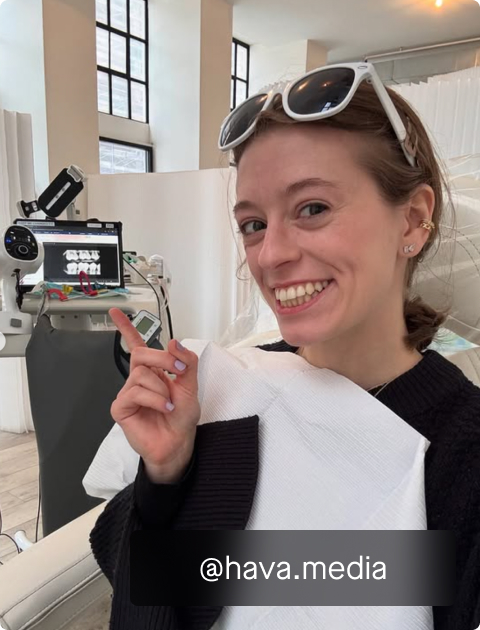Periodontal cleaning and scaling explained

Periodontal therapy is known by many names. If you were diagnosed with gum disease your dentist might have mentioned one of the following terms for how to address it:
- Deep cleaning
- Scaling and root planing
- Periodontal cleaning
- Gum cleaning
These terms all mean "periodontal therapy," which is a non-surgical treatment to address periodontitis, aka gum disease. Periodontitis is a serious infection in your gums that causes non-reversible damage to your gum tissue and bone surrounding the tooth. Left untreated it can destroy your gum and bone tissue and lead to loose or lost teeth.
How does your clinician determine if you're a candidate for non-surgical treatment versus surgical treatment? It depends on the severity of your gum disease. "For mild to moderate cases of periodontitis, non-surgical routes are the least invasive and most effective way to combat the disease," explains Dr. Kevin Walker, DDS. "If your case is severe, more in-depth treatments might be recommended to ensure the disease is stabilized."
If your clinician diagnosed you with periodontitis, we're happy you're taking a more proactive approach to learn more about periodontal therapy! Let's dive into what periodontal therapy entails, what you can expect, and (most importantly) what it might cost your bottom line to save your gum line.
Periodontal scaling, root planing, periodontal therapy? What on earth do these terms mean?
It can be super confusing when one dentist office uses a term like "deep cleaning," and another office uses a term like "periodontal scaling." To make things more complex, the insurance companies call it "periodontal scaling and root planing." These are all synonyms for periodontal therapy.
Hold up… Scaling? Root planing? What do these crazy terms even mean! Here's some factoids for you about dental terminology:
- "Scaling" is the clinical term when using dental instruments to remove soft and hard deposits from the teeth. Yes, that's a nice way of saying 'scraping the gunk off your teeth.' So in a way, 'scaling' is the nicer way to say 'scraping' in dentistry.
- "Planing" is an interesting character. It's an out-of-date procedure where the cementum layer of the tooth was removed / smoothed because it was thought, previously, that this layer harbored periodontal bacteria. Turns out this is EXTREMELY damaging to your teeth which is why the practice has been retired. Today "root planing" is used to remove subgingival plaque while leaving your cementum intact.
The term we prefer to use is 'periodontal therapy.' That's because the treatment is designed to heal a disorder, in this case periodontitis.
Let's chat about how periodontal therapy (or root planing, or gum scaling) actually works to stop your gum disease from advancing.
Gum scaling (aka periodontal therapy) is a minimally-invasive strategy to address gum disease
Each dentist may use slightly different techniques for periodontal therapy, but in general the goal is to remove active infections and bacteria from the pockets around your teeth and prevent further damage to the gum, bone, and tooth tissue.
When it comes to addressing periodontal disease, there are a range of options based on how advanced your disease is. In some cases surgical procedures might be required. If that's the case you'll want to go to a periodontist (a fancy word for "gum specialist") who is set up for and has experience with the surgical treatment that works for you.
If your periodontitis is not advanced, periodontal therapy is a great non-surgical option that can help you arrest the disease and get to a steady state where you are maintaining your health. Let's dive into what happens during periodontal therapy.
"Gum therapy breakdown" - how periodontal therapy works
Here's an outline of what might happen on your periodontal therapy journey, starting with the initial appointment where you were diagnosed with periodontitis.
- Your clinical team will complete your perio chart (map the depths of all your gum pockets), and take updated x-rays on your teeth
- Your dentist will look at your pocket depths and signs of active infection in your x-rays. Pockets of more than 4 mm and evidence of infection in your x-ray will determine if you have periodontitis.
- If you have periodontitis, your dentist will chat with you and discuss which teeth are experiencing the disease.
- If your periodontitis is mild to moderate, you'll return to the office for periodontal therapy. Your therapy session might take up to 90 minutes, and you may require two or more sessions depending on how many teeth have active periodontitis and the level of difficulty to complete the periodontal therapy.
- At the beginning of your therapy session, your hygienist will ensure you are as comfortable as possible.
- They'll use a special instrument to remove tartar, plaque, and bacteria from your tooth surface and deep beneath your gum line.
Once you complete periodontal therapy your dentist will evaluate if the infection has been arrested, bringing your mouth to a stable state.
If you've successfully halted periodontitis, that's great! However you'll need to take proactive steps to keep your periodontitis dormant and your mouth in health.
"Many patients feel relieved when they successfully complete periodontal therapy," explains Wally hygienist, Sarah Clark, RDH. "But we always like to remind patients that once you have periodontitis, you have it for life. Now it's a matter of keeping it under control and to prevent the disease from flaring up again, creating more risk for the tissue in your mouth"
D4341 - what this code means and what it will cost you
If you received a quote or a bill for periodontitis at a traditional dentist, chances are you saw the code "D4341" somewhere on the document. This is the CDT code (the medical codes dentists use to bill insurance) for "scaling and root planing," aka periodontal therapy.
If you're paying for periodontal therapy in NYC, a traditional dentist will charge you around $350 per quad.
Per quad?
Yes. Depending on how many teeth have periodontitis and where those teeth are located will determine how many quads you pay for. It's done this way because the insurance companies will only reimburse dentists by the quad.
Oh, and if you have insurance don't expect them to cover the full cost of periodontal therapy. Most insurance companies have a co-pay for periodontal therapy, and then might cover up to 80% of the cost before sending the remaining balance to you.
Are you as confused and frustrated as we are? That's why we're doing periodontal therapy differently at Wally. We charge per tooth rather than by the quad, and our prices can save you up to 75% on periodontal therapy.
If you're not a member, check out if our membership might be right for you.









